 |
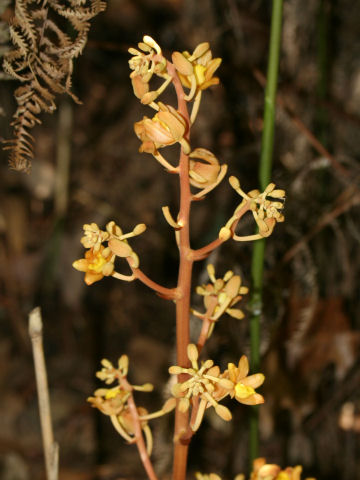

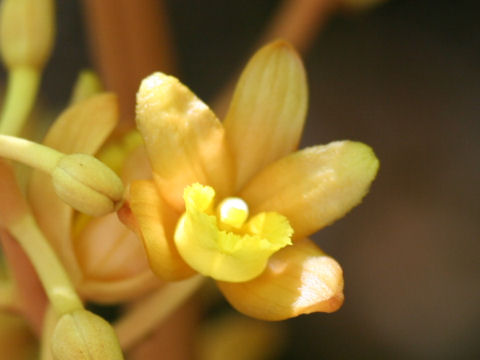

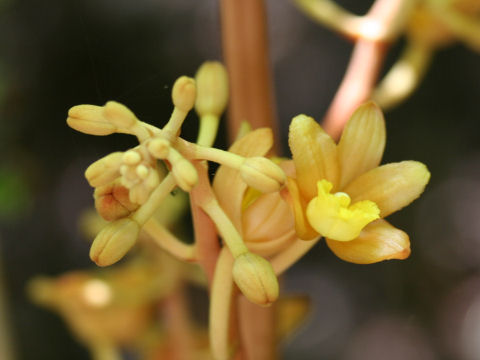

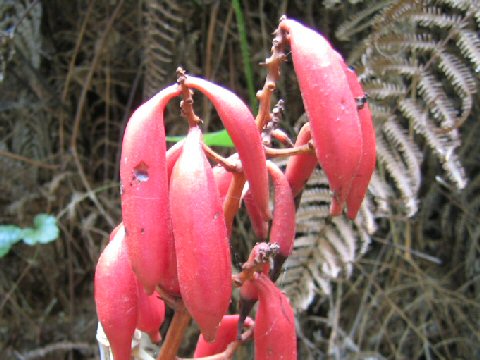

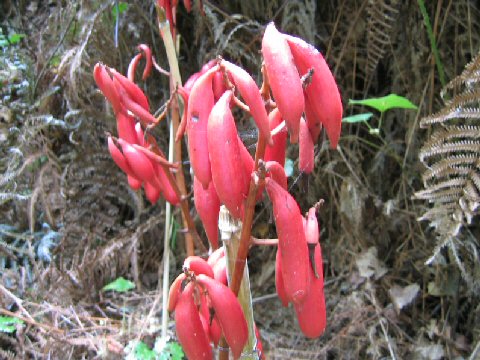

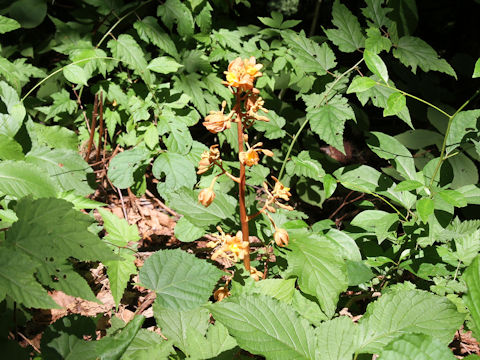

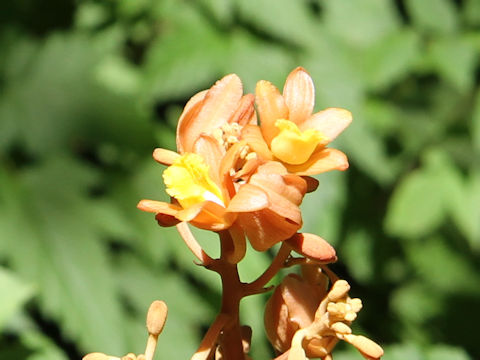

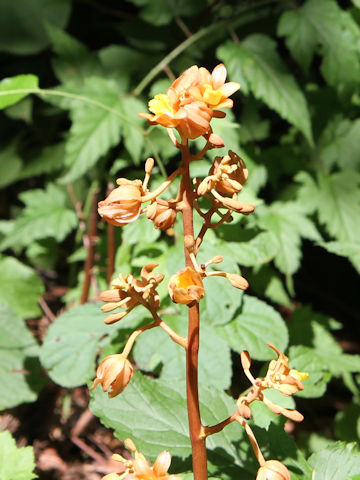

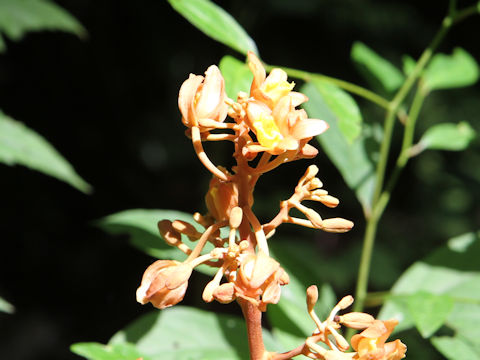

|

|
わが国の固有種で、各地に分布しています。暗く湿った落葉樹の林内に生え、高さは30〜80センチほどになります。葉は退化して、「ならたけ(楢茸)」と共生する腐生植物です。6月から7月ごろ、黄褐色の花を咲かせます。果実は赤いウィンナーのようなかたちで、垂れ下がります。名前は、この果実を「あけび(通草)」に見立てたもの。
|

|
ラン科ツチアケビ属の多年草で、学名は Galeola septentrionalis。英名はありません。
|

|
"Tsuchi-akebi" (Galeola septentrionalis) belongs to Orchidaceae (the Orchid family). It is a perennial herb that is endemic to Japan and distributed elsewhere. This herb grows in dark, wet, deciduous forests, and it can reach 30-80 cm in height. The leaves are degenerate. It is a saprobic plant and lives with the Honey mushroom (Armillaria mellea ssp. nipponica). The yellowish brown flowers bloom in June to July. The fruits are red, sausage-like appearance and droop. The Japanese name is derived from the fruit shape of "Akebi" (Akebia quinata).
|

|
[上・中1〜2] 大阪府交野市「大阪市大付属植物園」にて、2006年06月21日撮影。
[中3・中4] 同上にて、2004年09月14日撮影。
[中5〜7・下] 福島県天栄村「二岐山」にて、2014年07月26日撮影。
|










